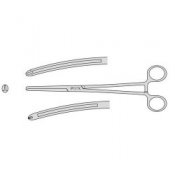

The decision to perform a hysterectomy for leiomyomas is usually based on the need to treat symptoms-abnormal uterine bleeding, pelvic pain, or pelvic pressure. Fertility-preserving surgical management (myomectomy) is possible in most patients with leiomyomas. The proportion of hysterectomies performed for leiomyomas decreased over time ( 1) (see Chapter 15). Obstet Gynecol 2008 34.e1–e7, with permission. Inpatient hysterectomy surveillance in the United States, 2000–2004. (includes cervical dysplasia and menstrual disorders)įrom Whiteman MK, Hillis SD, Jamieson DJ, et al. Table 24.1 Indications for Hysterectomy (Percentage): United States 2000–2004 Hospitalization rates for hysterectomy in women between the ages of 15 and 54 years decreased from 1998 to 2005 for all indications except for menstrual disorders ( 5). As expected, the indications differ with the patient’s age ( 1). Uterine leiomyomas are consistently the leading indication for hysterectomy. The indications for hysterectomy are listed in Table 24.1. The frequency was the highest with abdominal hysterectomy and the lowest with vaginal hysterectomy. Bilateral salpingo-oophorectomy decreased between 20 from 53.8% to 49.5% ( 1). Reports on the effect of physician gender conflict with recent data shows no overall impact ( 4). Hysterectomy rates are higher for black women ( 3). Lower socioeconomic status is associated with increased hysterectomy rates ( 2). The lowest rates are consistently in the northeastern portion of the United States. The highest rates of hysterectomy are for women living in the southern United States and they occur at a younger age.

The highest rate of hysterectomy is between the ages of 40 and 49 years with an average age of 46.1 years ( 1). These data do not represent hysterectomies performed in ambulatory settings. According to the National Hospital Discharge survey, the rate of hysterectomy during the 5-year study period was 5.4 per 1,000 women per year in 2000 and declined to 5.1 per 1,000 per year in 2004. After cesarean delivery, it is the second most frequently performed major surgical procedure in the United States ( 1). Hysterectomy is one of the most common surgical procedures performed. Salpingo-oophorectomy at the time of hysterectomy for benign disease in premenopausal women at average risk for ovarian malignancy is associated with an increase in long-term patient mortality from cardiovascular disease, and ovarian conservation should be strongly considered in these patients.


 0 kommentar(er)
0 kommentar(er)
